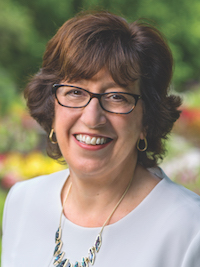
Robert Barker/Cornell Marketing Group
Less than a month after being inaugurated as Cornell’s president, I received an unexpected invitation from Chris Kim, Cornell’s director of orchestras. Would I be willing to join the Cornell Symphony Orchestra in a performance of Gunther Schuller’s Journey into Jazz, serving as the narrator?
As a professor and academic administrator, I have spent much of my professional life talking in front of groups of people. But I had never in my life done it with an orchestra, in a setting where my performance would rely on theirs, and theirs on mine. What if I talked too fast? What if I missed a cue? With a musical education consisting entirely of elementary school violin lessons (about which the less said, the better), I worried. These were incredibly talented, highly trained student musicians. Did a computer scientist like me really belong on the same stage?
But how could I say no? As Cornell’s new president, I was spending my days encouraging people to try new things, to build out-of-the-box partnerships, to push their own boundaries. Here was my chance to do just that myself.
So I said yes, and with a renewed appreciation for those ill-fated violin lessons (I could at least read music!) I began working on my part: telling the story of a boy named Eddie, who learns to make music first with his trumpet, then with other players, and finally with his full self. A few weeks later, I walked into Bailey Hall for a dress rehearsal, where I quickly discovered, to my delight, that at Cornell, a computer scientist belongs onstage as much as anyone else: the orchestra was made up of students from across the University. Music, they told me, had given them a community at Cornell. More than that, it had given them what it gives us all: a way to share the experience of creativity, to sound the chords of our own minds and souls.
When I first came to Cornell’s campus, I described it as “magical.” In the years since, I have come to better understand that magic. The physical beauty is what people notice first about Cornell: the gorges, the waterfalls, the soaring views. But in time, we also discover the beauty that is created here. Cornell is home to the full constellation of creative human endeavor. Music is made here, of course, as are art, dance, drama, and literature. Intellects are awakened here to the fascination and mysteries of humanity and the physical world, and to the hard-won wisdom of many professions. Ideas appear in classes, conversations, and chance encounters; research builds on what is learned, and reaches into the unknown. And magic comes from unexpected connections that are discovered across different disciplines and different areas of expertise. Just as an orchestra uses every instrument to create its fullest sound, so does the breadth of Cornell’s fields of study create the fullest environment for sparking and fueling creativity.
The day after the dress rehearsal, I told the story of Eddie’s journey to a packed audience in Bailey Hall, as the music of that journey crept and leapt and swung around me. Despite my worries (and due far more to the musicians’ skill than my own), it went just fine. Looking back on it now, I realize how much Eddie’s story tells us about the magic of Cornell. Eddie couldn’t learn jazz just by learning the trumpet. He also had to learn from the oboes, the pianos, and the saxophones. He needed to experience different orchestras, traditions, and styles before he could create a style of his own. It’s a metaphor for how all of us create and discover, how any of us learn deeply and well: through invention and exploration, through cooperation and collaboration—not just from, but with each other.
— Martha E. Pollack
president@cornell.edu
This piece was adapted from President Pollack’s May 2019 Commencement address.


